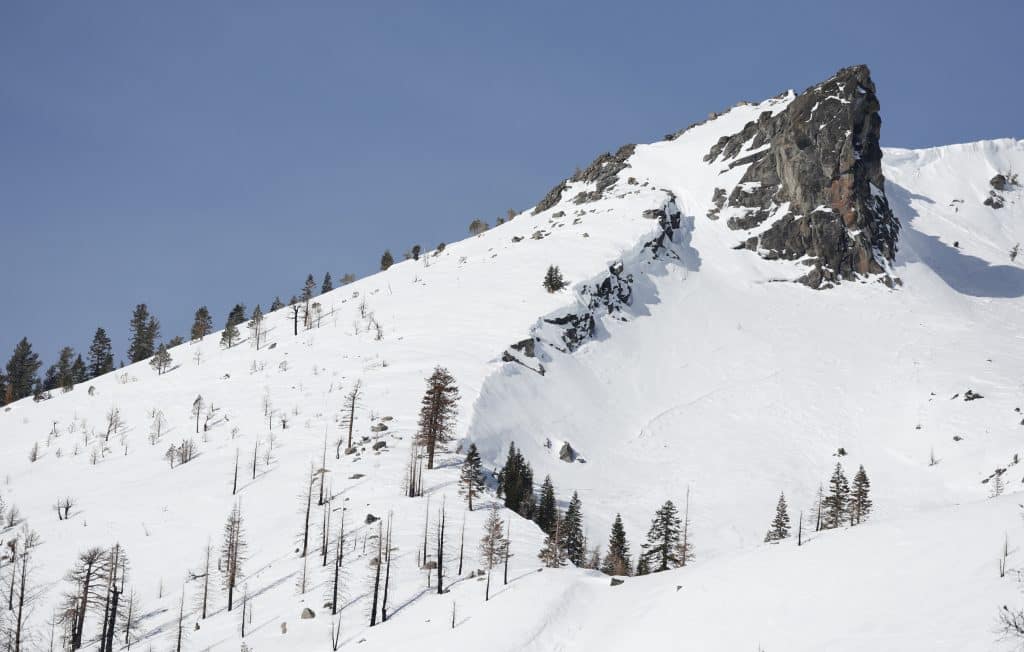Back-to-back storms lead to massive snowpack, more than double of seasonal average

Provided/Fred Greaves/California Department of Water Resources
SOUTH LAKE TAHOE, Calif. — The California snowpack is more than double the seasonal average after receiving a significant boost from one of the wettest three-week periods on record, state officials announced Wednesday.
The Department of Water Resources on Wednesday, Feb. 1, conducted the survey at Phillips Station, at the entrance road to Sierra-at-Tahoe and recorded the snowpack at 205% of normal and a snow water equivalent of 33.5 inches, which is 193% of average for the location.
The snow water equivalent measures the amount of water contained in the snowpack and is a key component of DWR’s water supply forecast.
The wettest three weeks followed what was the driest three-year period on record in California and also one of the hottest heat waves ever for September in 2022, said a DWR press release.
“California has always experienced some degree of swings between wet and dry, but the past few months have demonstrated how much more extreme those swings are becoming,” said DWR Director Karla Nemeth. “California is preparing for more intense and dangerous climate swings by bolstering both drought and flood preparation. While today’s results are good news for water supplies, we know from experience how quickly snowpack can disappear if dry conditions return in the months ahead.”
Officials said April 1 is when the snowpack usually peaks.
DWR’s electronic readings from 130 snow sensors placed throughout the state indicate the statewide snowpack’s snow water equivalent is 33.7 inches, or 205% of average for this date. While those results are currently outpacing the record 1982-83 season, two months still remain.
DWR said that every day it does not rain or snow, the conditions are drying. If California returns to dry conditions and the next two months lack additional precipitation, like what the state experienced last season, a significant snowpack early in the winter can quickly disappear. Periodic rain and snow over the next several months will be key to get the biggest water supply benefit from the state’s snowpack without posing additional flood risks.
“Large snow totals like today are a welcome sight but also present new challenges for water managers as they walk the fine line between water supply and flood control,” said DWR’s Snow Surveys and Water Supply Forecasting Unit Manager Sean de Guzman. “As we move into the snowmelt season in the spring, water managers will work to manage flood risk and optimize the snowpack’s water supply benefits during peak demands in the summer.”
On average, the Sierra snowpack supplies about 30% of California’s water needs and is an important factor in determining how DWR manages the state’s water resources. Its natural ability to store water is why the Sierra snowpack is often referred to as California’s “frozen reservoir.”
DWR is currently conducting Airborne Snow Observatory survey flights to collect more information on the snowpack accumulated by these powerful storms. Data from these flights, which use LiDAR and spectrometer technology to measure snowpack across broad swaths of key watersheds, will be used by DWR to get an accurate account of California’s snowpack and its water content and will increase the accuracy of water supply runoff forecasts. Since the storms California experienced in January saw variable snow elevations, this data, combined with snow course and snow sensor data, will help DWR understand how snow has been distributed across the Sierra Nevada.
These new data tools align with Gov. Gavin Newsom’s “California’s Water Supply Strategy: Adapting to a Hotter, Drier Future” which calls for modernizing how the state manages water. The tools will also help inform flood management decisions, which will be increasingly important as California swings between extreme drought and flood. The recently adopted 2022 Update to the Central Valley Flood Protection Plan emphasizes the importance of flood management and the need to adapt California’s flood infrastructure to a rapidly changing climate.
The next survey is tentatively scheduled for March 1.
Support Local Journalism


Support Local Journalism
Readers around Lake Tahoe, Truckee, and beyond make the Sierra Sun's work possible. Your financial contribution supports our efforts to deliver quality, locally relevant journalism.
Now more than ever, your support is critical to help us keep our community informed about the evolving coronavirus pandemic and the impact it is having locally. Every contribution, however large or small, will make a difference.
Your donation will help us continue to cover COVID-19 and our other vital local news.




